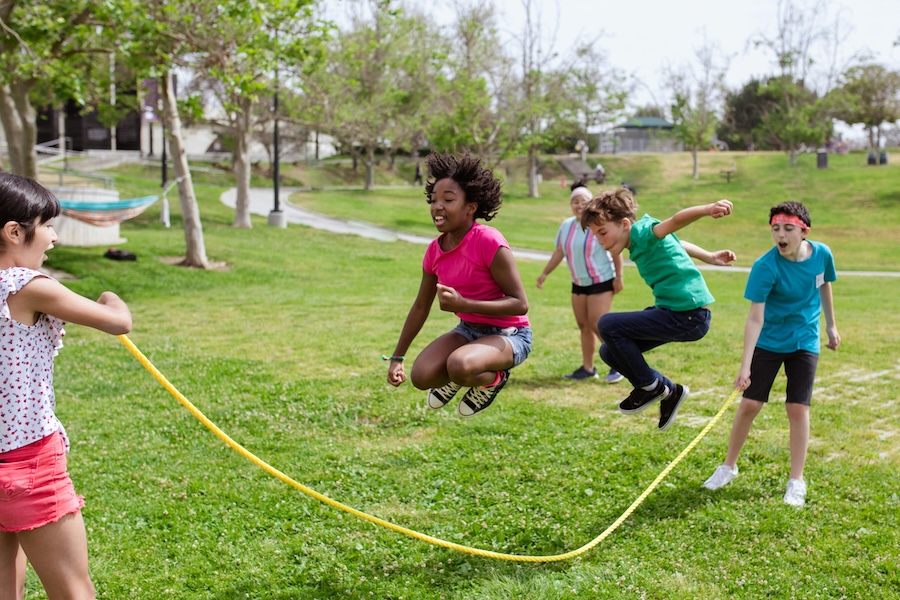
Life is full of ups and downs—and school is no exception. Whether it’s a tough test, a friendship hiccup, or an overwhelming change, every student faces challenges that test their emotional strength. The question is: how do we help them bounce back?
The answer lies in resilience.
Resilience is more than just “toughing it out.” It’s the ability to adapt, recover, and grow from adversity. And it’s a skill that can be nurtured through daily practice—both in the classroom and at home.
In this post, we’ll explore resilience activities for students, how to model student perseverance, and simple ways to create a learning environment where students feel empowered to face life’s curveballs with courage.
Why Resilience Matters for Learning and Life
Resilient students:
- Stay motivated even when tasks get difficult
- Learn from mistakes instead of shutting down
- Handle stress and change more constructively
- Bounce back after setbacks with greater confidence
This emotional strength is not something students either “have” or “don’t have.” Like a muscle, it can be built through supportive relationships, emotional awareness, and intentional skill-building.
According to CASEL’s framework, resilience is supported by several core SEL competencies, especially:
- Self-awareness: Recognizing emotions and triggers
- Self-management: Regulating thoughts, actions, and stress
- Responsible decision-making: Learning from consequences and choosing healthy responses
Explore how resilience is supported in our Elementary SEL Curriculum and in our approach to Social Emotional Learning.
Resilience Activities for Students (K–6)
The following are in-classroom activities that can support students in building their resilience muscles.
1. “What’s In Your Control?” Chart
Draw a big circle and divide it in half:
- One side: Things we can control (attitude, effort, actions)
- Other side: Things we can’t control (weather, others’ choices)
This visual helps students sort their stressors and shift focus to what they can change.
2. Growth Mindset Pep Talk
Use phrases like:
- “Mistakes mean you’re trying something new.”
- “You haven’t mastered it yet.”
- “You can do hard things.”
Reframing struggles helps kids see effort and setbacks as part of the learning process.
3. “Bounce-Back Stories” Circle
Have students share stories of a time they:
- Faced something difficult
- Tried again
- Learned from it
Celebrate their grit and emphasize that bouncing back doesn’t always mean getting it “right”—just that they kept going.
4. Classroom “Try Again” Zones
Create a space where students can regroup and reframe. Include:
- Affirmation cards
- Breathing tools (like a pinwheel or stress ball)
- Journaling pages
This model promotes healthy self-regulation and gives students permission to pause, reflect, and return with a renewed perspective.
5. “Resilience Chain” Class Project
Each time a student tries again after a setback or shows perseverance, add a link to a paper chain in the room. Watch it grow as a visual reminder that resilience is a community strength.
Daily Practices That Nurture Student Perseverance
Model Emotional Honesty
When things don’t go as planned, share your own process:
“I felt frustrated when that didn’t work, but I’m trying again. I’m proud I didn’t give up.”
This teaches students that adults feel big emotions too—and move through them in healthy ways.
Normalize “Failure Moments”
Start the week with “Mistake Monday” where students (and teachers!) share something they got wrong—and what they learned. Turn these into class lessons about courage and curiosity.
Encourage Self-Talk Shifts
Teach students how to reframe inner dialogue:
- Instead of “I’ll never get this,” say “This is hard, but I’m learning.”
- Instead of “I’m bad at this,” say “I’m getting better with practice.”
These micro-shifts in language make a major impact over time.
Resilience at Home: Tips for Families
You can help families support resilience by sharing these take-home strategies:
- Create predictable routines: Structure helps kids feel safe enough to try, fail, and try again.
- Praise effort over outcome: Celebrate what your child did, not just how they performed.
- Talk about feelings openly: Let your child know that frustration, sadness, and anger are normal—and manageable.
- Model perseverance: When something is hard, narrate your process (“I feel stuck, but I’m going to keep working on it.”)
These small shifts add up to a home environment that reinforces what you’re teaching in school.
Teaching Resilience is a Long Game
You won’t always see the results right away—but with consistency, you’ll start to notice:
- Students recovering more quickly from disappointment
- Fewer meltdowns when things don’t go as expected
- A classroom culture where effort is celebrated, not just perfection
Resilience doesn’t mean kids stop feeling discouraged. It means they learn how to keep going anyway—and feel proud of themselves for doing so.
With tools like our Tools of the Heart and Social Emotional Learning strategies, you can help them bounce back stronger, day by day.
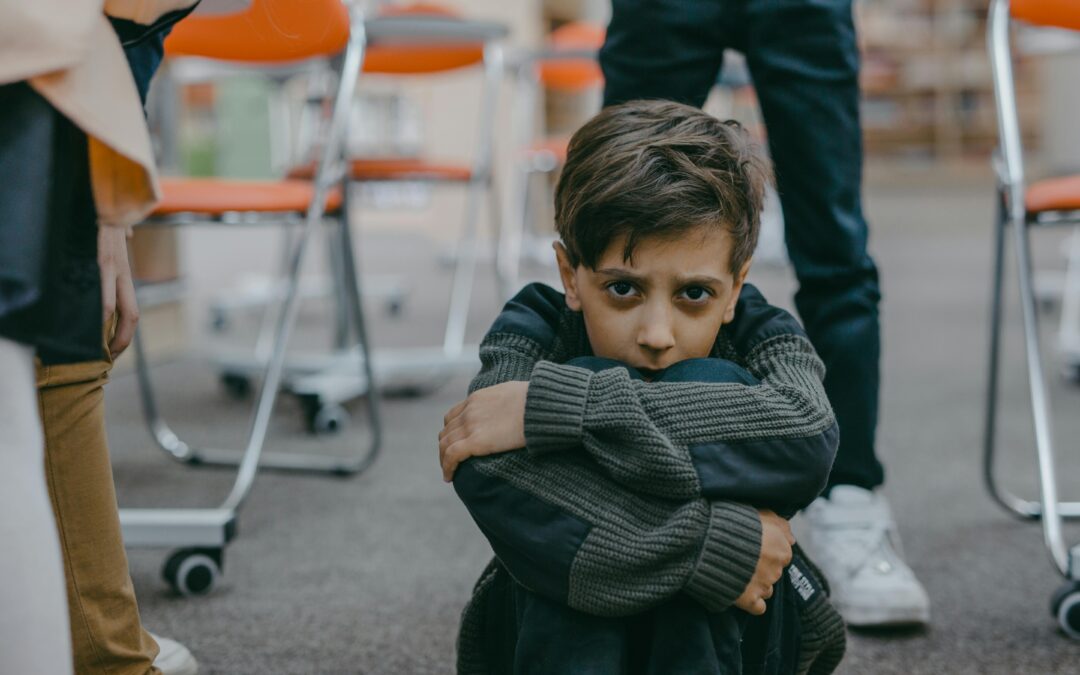
From friendship misunderstandings to sharing squabbles, conflict is a natural part of childhood. But for many kids, managing big feelings and articulating those emotions in a healthy way doesn’t come naturally—it has to be taught.
That’s where “I feel” statements come in. This deceptively simple communication tool empowers children to voice how they feel, what caused the feeling, and what they need, without blame or shame. The result? More peaceful conversations, stronger relationships, and a powerful boost in emotional intelligence.
Let’s explore why “I feel” statements matter, how to teach them effectively, and how they support the development of Social Emotional Learning (SEL).
What Are “I Feel” Statements for Kids?
“I feel” statements follow a basic structure:
“I feel [emotion] when [event] because [reason]. I need [solution or request].”
Here’s an example a 2nd or 3rd grader might use:
“I feel frustrated when you grab the ball before my turn because I’ve been waiting. I need you to wait until I’m done.”
This format helps kids:
- Identify and name their emotions
- Take ownership of their experience
- Express what they need in a respectful way
When kids learn to replace blame (“You’re mean!”) with clarity (“I feel left out”), they begin to take the first step toward conflict resolution and emotional literacy.
Why “I Feel” Statements Are a Game Changer
Also, by teaching kids to use “I feel” statements isn’t just about conflict resolution—it’s about emotional empowerment.
Here’s why they work so well:
- They Build Emotional Awareness – Kids learn to notice, name, and normalize emotions, from anger to joy to disappointment. This emotional vocabulary is foundational to all SEL growth.
- They Reduce Reactive Behavior – “I feel” statements encourage reflection before action. Instead of lashing out, children pause, process, and speak their truth constructively.
- They Improve Peer Relationships – When a child uses “I feel” statements, it’s easier for peers to understand their perspective. This opens the door to empathy and cooperation.
- They Foster Problem Solving – The final part of the “I feel” statement—“I need…”—invites solutions. This teaches kids to think creatively about how to meet needs while respecting others.
How “I Feel” Statements Support SEL
This is how “I feel” statements align directly with the five core SEL competencies:
| SEL Competency |
How “I Feel” Statements Help |
| Self-Awareness |
Helps students identify and label their emotions. |
| Self-Management |
Encourages emotional regulation by pausing to reflect. |
| Social Awareness |
Cultivates empathy by helping students explain how actions affect them. |
| Relationship Skills |
Improves communication and conflict resolution. |
| Responsible Decision-Making |
Promotes accountability and mutual respect. |
Using “I feel” statements consistently helps create a safe, inclusive classroom culture where all voices are honored.
Implementing a full Elementary SEL Curriculum for age-appropriate tools helps build these competencies.
Teaching “I Feel” Statements in Your Classroom or Home
1. Model It Yourself
The best way to teach “I feel” statements is to use them yourself:
“I feel proud when I see how hard you’re working, because it shows dedication. I need you to keep believing in yourself.”
Modeling normalizes emotional expression and shows kids that adults use these tools too.
2. Use Sentence Starters and Posters
Give kids a clear visual reminder with sentence frames and emotion charts. Display the formula somewhere visible:
- I feel ___
- When ___
- Because ___
- I need ___
Pair it with our Feelings Poster to help students choose emotions from a list or image.
3. Practice in Safe, Calm Moments
Set up low-stakes practice scenarios where kids can try out “I feel” statements without pressure. These could include:
- Role-playing common conflicts
- Rewriting angry phrases into respectful ones
- Journaling emotions using the “I feel” structure
4. Integrate Into Conflict Resolution Tools
At Soul Shoppe, we teach tools like the Peace Path to help kids mediate conflicts with one another. “I feel” statements are a core component of this process.
The structure becomes second nature when built into peer mediation, classroom conversations, and restorative practices.
Extension Activities and SEL Integration
Looking for ways to reinforce “I feel” statements over time? Try these ideas:
- Daily Feelings Check-In: Have students start the day by naming how they feel and why.
- Literature Tie-Ins: After reading a book, ask students to imagine what a character’s “I feel” statement would be.
- Art & Writing Prompts: Use art, drawing, or journaling to help students express emotions non-verbally before adding words.
Try our full Tools of the Heart program for more ready-to-use lessons and activities that build emotional literacy.
Why This Skill Matters for Life
When students learn to articulate how they feel and what they need without attacking or retreating, they become more than good classmates—they become compassionate leaders.
“I feel” statements create a bridge between emotion and communication. Over time, they lead to fewer blowups, stronger friendships, and a more respectful, resilient classroom culture.
This simple phrase—“I feel ___ when ___ because ___. I need ___.”—holds extraordinary power.
Remember to make sure your classroom culture validates all emotions. Teach that every feeling is okay, even if every behavior isn’t.
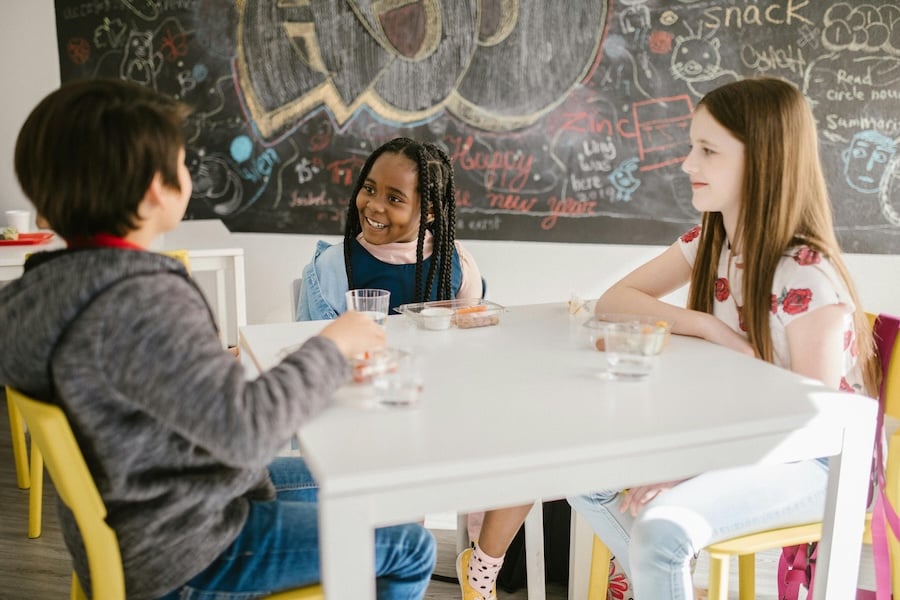
In classrooms across the country, a quiet revolution is taking place. Teachers and educators are expanding their lessons beyond math and reading to include something just as essential: Social Emotional Learning (SEL). At the heart of SEL are five key areas, known as the core SEL competencies. These competencies form the foundation for helping children develop into compassionate, responsible, and resilient individuals.
Let’s take a closer look at what each of these SEL competencies means, how they show up in everyday learning, and why they matter so much—both in the classroom and beyond.
What Are SEL Competencies?
SEL competencies are research-backed areas of development that support a child’s ability to understand and manage emotions, build strong relationships, and make thoughtful decisions. Developed by the Collaborative for Academic, Social, and Emotional Learning (CASEL), the five competencies are:
- Self-awareness
- Self-management
- Social awareness
- Relationship skills
- Responsible decision-making
These areas offer a framework for educators to build a supportive and emotionally intelligent classroom culture. The following outlines why these competencies matter and the ways they can be incorporated into classrooms.
1. Self-Awareness: Knowing Yourself
Self-awareness is the ability to recognize your emotions, thoughts, and values—and understand how they influence behavior.
For example, a student who realizes they’re feeling frustrated before a test is practicing self-awareness. With that insight, they can use tools to calm themselves before it escalates into anxiety or avoidance.
Children who develop strong self-awareness are more confident and more likely to advocate for their needs. They learn to identify their strengths and areas for growth, which supports academic performance and overall well-being.
Support it in your classroom with:
- The Feelings Poster: Tools of the Heart
- Activities that can include journaling, vision boards and strength spotting
2. Self-Management: Handling Emotions and Behaviors
Self-management is the ability to regulate emotions, control impulses, and persist in the face of challenges.
This competency helps students manage stress, delay gratification, and maintain focus—especially when things get tough. Whether they’re taking turns in group work or bouncing back from a low grade, self-management empowers kids to respond rather than react.
This doesn’t mean kids will never feel upset or angry—it means they learn how to manage those big feelings in healthy, productive ways.
Encourage self-management with:
3. Social Awareness: Understanding Others
Social awareness involves recognizing and respecting the feelings, perspectives, and experiences of others.
It’s what allows students to build empathy, appreciate differences, and act with kindness. In diverse classroom settings, social awareness is key to creating inclusive environments where every student feels like they belong.
This skill helps students understand how their actions affect others—and encourages them to respond with compassion.
Foster social awareness through:
4. Relationship Skills: Connecting with Others
From making friends to working in teams, relationship skills help children form positive connections and resolve conflicts peacefully.
These skills include active listening, clear communication, cooperation, and conflict resolution. When students develop relationship skills, they learn how to build trust, handle disagreements, and support one another.
Practice relationship skills with:
5. Responsible Decision-Making: Choosing Wisely
Responsible decision-making involves making thoughtful, ethical, and constructive choices about personal and social behavior.
This competency teaches children to evaluate situations, consider consequences, and reflect on their values. It’s the difference between reacting impulsively and choosing with intention.
As students grow, these skills become vital for resisting peer pressure, setting boundaries, and navigating real-life situations with confidence and integrity.
Nurture decision-making skills with:
- Class agreements and reflection-based discussions
- Opportunities to make choices and evaluate outcomes
Why SEL Competencies Matter
When SEL is woven into the fabric of daily classroom life, students thrive. These five SEL competencies equip students not only to succeed academically, but also to grow into caring, capable, and community-minded people.
Educators who center these competencies help children learn how to:
- Understand themselves and others
- Express emotions constructively
- Navigate conflict with empathy
- Make thoughtful decisions
- Create stronger relationships with peers and adults
And when that happens, classrooms transform into places of safety, connection, and possibility.
Bring SEL Competencies to Life with Soul Shoppe
At Soul Shoppe, we offer engaging, age-appropriate resources to help teachers bring these core competencies into their classrooms with ease and heart.
Explore our full range of programs and tools to support SEL:
And don’t forget to visit our blog for free SEL resources and ideas.
Empowering the Whole Child
Teaching the five SEL competencies is more than just a checklist—it’s an invitation to create a classroom rooted in compassion, self-discovery, and resilience. When children feel seen, supported, and capable, they carry that confidence with them for life.
Social Emotional Learning helps kids become the kind of people who make the world a better place—and that’s a lesson worth teaching every day.
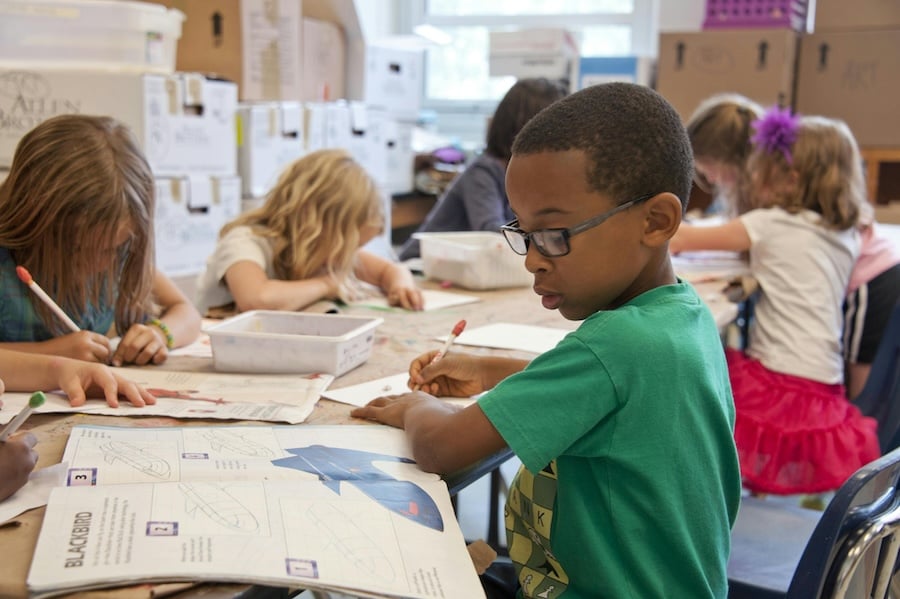
In today’s classrooms, there is a growing recognition that success isn’t only measured in test scores. Educators, researchers, and parents are realizing that a child’s ability to navigate emotions, build relationships, and make responsible decisions directly impacts their academic growth.
This is where Social Emotional Learning (SEL) comes in—and why it matters more than ever.
Let’s explore the powerful connection between SEL and academic success, how it reduces behavioral challenges, and why every school benefits from centering emotional intelligence in its curriculum.
What Is SEL and Why SEL Matters?
Social Emotional Learning (SEL) is the process through which children (and adults) develop essential skills like self-awareness, self-regulation, empathy, and relationship building. These skills are foundational—not just for life success, but for thriving in the classroom.
When we ask “why SEL matters,” we’re really asking: What kind of learners—and what kind of humans—do we want to develop?
SEL matters because it addresses the whole child, recognizing that emotional health and academic achievement go hand in hand. It gives students the tools they need to stay focused, manage conflict, bounce back from failure, and contribute meaningfully to their community.
Visit our Social Emotional Learning homepage to see how SEL looks in real classrooms.
The Research: SEL and Academic Gains
According to a landmark meta-analysis from CASEL (Collaborative for Academic, Social, and Emotional Learning), students who participated in SEL programs showed an average 11 percentile-point gain in academic performance compared to peers who didn’t receive SEL instruction.
Additional findings include:
- Improved classroom behavior
- Better attitudes toward school
- Increased ability to manage stress and depression
- Higher graduation and college enrollment rates
When children feel emotionally safe, valued, and connected, they learn more. Emotional intelligence doesn’t distract from academics; it amplifies them.
Why SEL Reduces Behavioral Issues
When children lack the language or tools to express their emotions, those feelings often show up in disruptive or withdrawn behavior. SEL offers proactive tools, not reactive punishments.
With SEL:
- Students learn how to name their emotions, rather than act them out.
- Conflict becomes an opportunity to practice respectful communication.
- Classrooms shift from power struggles to partnerships.
By teaching students how to manage frustration, disappointment, or social tension, we reduce office referrals, suspensions, and missed learning opportunities. More time is spent teaching and connecting, and less time is spent correcting.
Explore how Tools of the Heart helps students manage big feelings and stay engaged.
The Link Between Emotional Safety and Learning
The brain is designed for survival first, learning second. If a child feels unsafe, anxious, or emotionally overwhelmed, their brain devotes energy to protecting them—not absorbing new information.
SEL supports:
- Predictability through classroom routines
- Security through trusting relationships
- Calm through emotional regulation tools
These conditions free the brain to focus on curiosity, exploration, and critical thinking. In short: SEL creates the conditions for learning to flourish.
Academic Skills Are Social-Emotional Skills
Many of the skills we label “academic” are actually deeply tied to social-emotional abilities:
| Academic Skill |
SEL Competency That Supports It |
| Following directions |
Self-management, social awareness |
| Completing assignments |
Responsible decision-making, perseverance |
| Working in groups |
Relationship skills, empathy |
| Asking for help |
Self-awareness, confidence |
| Managing test anxiety |
Self-regulation, emotional vocabulary |
When we strengthen SEL competencies, we also improve a child’s ability to engage academically.
How SEL Levels the Educational Playing Field
Not all students arrive at school with the same emotional toolkit. Factors like trauma, cultural differences, neurodiversity, or language barriers can influence how students express and manage emotions.
SEL provides an equitable foundation. It teaches every student—regardless of background or ability—how to:
- Advocate for their needs
- Recognize their own emotions and triggers
- Build positive relationships with peers and adults
- Make constructive choices in the face of conflict
When we teach SEL explicitly, we close opportunity gaps and foster an inclusive classroom culture.
Learn more about our Elementary SEL curriculum designed for diverse learners.
What SEL Looks Like in Action
At Soul Shoppe, we believe SEL should be woven into the rhythm of the school day—not a one-time lesson. Here’s what SEL looks like in real classrooms:
- Peace Corners, where students can cool down and reflect
- Morning circles, to check in emotionally and build connection
- Conflict resolution tools like the Peace Path
- Feelings posters that help children name and process emotions
- Class agreements that promote shared values and respect
When SEL is consistent, it becomes a shared language of growth.
SEL Isn’t an Extra—It’s Essential
So, why does SEL matter?
Because academic excellence and emotional intelligence are not in competition—they are partners. SEL gives students the tools to succeed not just on paper, but in life. It prepares them for the challenges of the world by teaching them how to understand themselves and connect with others.
If we want learners who are curious, confident, and compassionate—SEL is where we start.
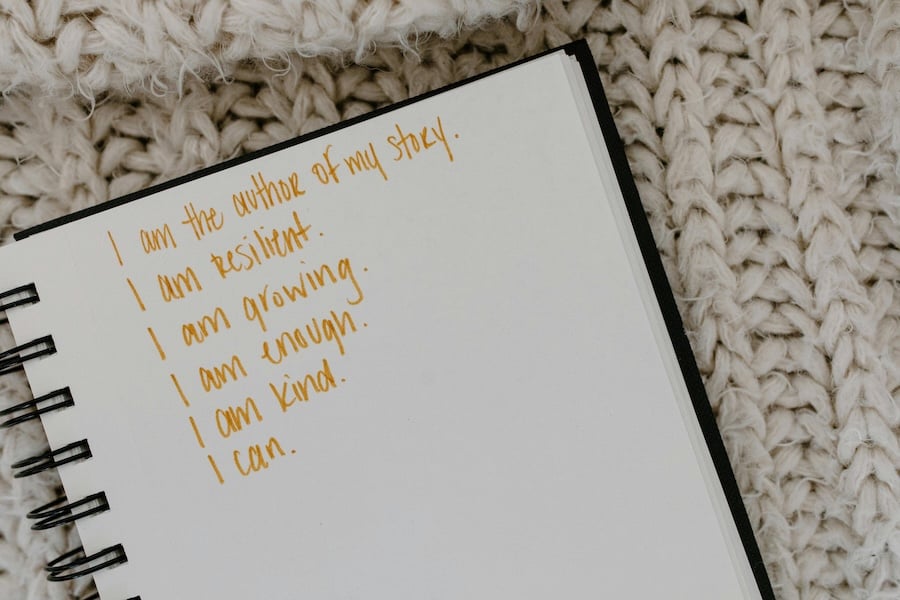
In the daily whirlwind of classroom life—tests, transitions, and tricky social dynamics—students carry more than just books in their backpacks. They carry self-doubt, pressure to fit in, and fears of failure. That’s why one small yet powerful tool can make a big difference: positive affirmations for students.
More than just “feel-good” phrases, affirmations are a way to build confidence, resilience, and emotional grounding. They help students see their worth, especially when the world feels uncertain.
In this post, we’ll explore how affirmations support Social Emotional Learning (SEL), promote student confidence, and contribute to a safe, inclusive classroom culture. Plus, we’ll share ready-to-use affirmations you can start using right away.
What Are Positive Affirmations for Students?
Positive affirmations are short, encouraging statements that students say or hear to reinforce their strengths, values, and potential. Think of them as internal messages that rewire how students view themselves—especially in moments of doubt or challenge.
Instead of:
“I’m not good at this.”
Try:
“I can improve with practice.”
These statements aren’t magic. But when repeated consistently, they begin to shape how students respond to setbacks, peer pressure, and internal criticism.
How Positive Affirmations for Students Support Social Emotional Learning (SEL)
Positive affirmations align beautifully with core SEL competencies like self-awareness, self-management, and resilience.
Here’s how they help:
- Build Emotional Vocabulary: Affirmations give students the words they may not yet have to express hope, strength, or calm.
- Strengthen Self-Image: Repeated positive self-talk nurtures inner beliefs, helping students see themselves as capable and worthy.
- Encourage Growth Mindset: Affirmations shift the focus from fixed ability (“I can’t do this”) to effort and learning (“I’m growing every day”).
- Calm the Nervous System: In anxious moments, repeating affirmations can reduce stress and re-center attention.
Discover our Tools of the Heart program, which helps children recognize and respond to big emotions with kindness and confidence.
Ready-to-Use Affirmations for the Classroom
Here’s a list of affirmations that are developmentally appropriate, inclusive, and ideal for classroom use. These can be used during morning meetings, transitions, or even written on the board.
Self-Worth Affirmations
- I am enough, just as I am.
- I have important things to say.
- My voice matters.
Growth Mindset Affirmations
- Mistakes help me learn.
- I can try again.
- I am always learning.
Empathy and Kindness Affirmations
- I choose to be kind to others.
- I treat people the way I want to be treated.
- I am a peacemaker.
Confidence and Courage Affirmations
- I believe in myself.
- I can do hard things.
- I am brave, even when I feel nervous.
Emotional Regulation Affirmations
- I can take deep breaths when I feel upset.
- My feelings are valid.
- I can pause and make a good choice.
You might even invite students to write their own affirmations and share them during class meetings.
Making Affirmations a Daily Habit
To create lasting impact, affirmations should be consistent, intentional, and visible. Here are a few simple ways to integrate them into daily classroom routines:
- Affirmation Wall: Dedicate a space on the wall where students can add their own positive statements.
- Morning Mantras: Begin each day with a class-wide affirmation said aloud.
- Journaling Prompts: Ask students to write an affirmation and reflect on how it applies to their day.
- Peace Corner Cards: Include affirmation cards in a calming space where students can reset emotionally.
- Partner Practice: Pair students to take turns saying affirmations to each other—helping both the speaker and listener internalize positive messages.
These small practices can shift the classroom culture from one of performance pressure to one of emotional safety and encouragement.
Browse our Elementary SEL Curriculum for tools that support daily positive affirmations for students and emotional check-ins.
Creating a Classroom That Believes in Every Student
When children repeatedly hear, “You are safe. You belong. You matter,” they start to believe it.
Affirmations aren’t about ignoring challenges or sugarcoating emotions—they’re about reminding students that they have tools, worth, and inner strength to face whatever comes their way.
Imagine a classroom where children encourage themselves, comfort each other, and meet setbacks with compassion. That’s the power of affirmations. And that’s the kind of culture Social Emotional Learning is built to foster.
Let’s give students messages that stick with them long after the bell rings.






